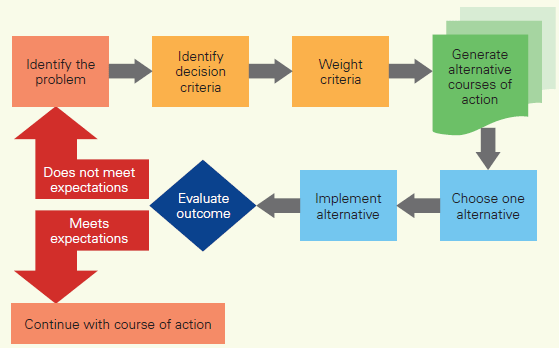One of the most difficult tasks a manager is called to undertake in any organization is decision-making.
Decisions are made every day, at all organizational levels, just as in all aspects of life. Some are subconsciously made and some require conscious thinking. Some are trivial and some bear a factor of importance. In any case, a person in a managerial position will be required at some point in her/his carrier to make some tough or critical decisions.
Why are decisions difficult?
Decisions are difficult by default simply because there is always more than one possible route to take in every junction. For every corporate problem raised there is more than one solution and the manager is required to choose among them. Since no one can guarantee the outcomes and consequences of every possible scenario, it is impossible for the manager to predict which would be the best choice in every occasion. Decisions may have serious implications on the finances of the business and they may affect human feelings and induce stress to people. Decision-making responsibility can be a burden to carry.
Decision-making ability is different from person to person. Whereas some persons find it easy to make what are seemingly difficult decisions, others struggle with even what looks like a straight forward choice. This has to do with the personality of the individual, the clarity of thinking and the ability to choose with assertiveness.
How can the decision-making process be facilitated?
Decision-making can be facilitated through gathering information and assessing the alternatives.
This can be done in a structured way:
Establish focus on the decision to be made!
It is important to be clear on what is the key question to be answered. Usually, an important issue is accompanied by a number of secondary questions. Therefore, clarity on the priorities is crucial.
Do follow a structured decision making thought flow:

Collect the facts
Facts, information and data need to be sought. Relevance, accuracy, completeness, quality and quantity are important so as to make informed decisions. External data should be collected from the source. Some information is internal, individual-specific such as risk attitude and risk tolerance, aggressiveness etc.
Identify and assess the alternatives
A number of paths are available to resolve a problem. Even if it comes to a “do something” or a “do nothing” dilemma, there is still a decision to be made. If the decision is critical, it may be worth spending time to list the options and go through a cost-benefit analysis for each one of them. Even though there are no guarantees, this exercise will probably rule out some options and make the final choice easier. At this stage it is also worth working out which of the options have a higher chance of being implemented. An option may seem to be the best solution but may have very low chances to be implemented due to factors beyond one’s control. A prioritization based on the likelihood of a successful outcome and the likelihood of successful implementation can be made either formally (on paper) or informally (in the manager’s mind).
Make a choice
Whatever the lists will end up with, the manager will need to make the decision. Numbers, data, facts and information, probabilities and statistical analysis will definitely facilitate the process. However, a human brain will make the choice, weighing all the facts together with judgement, instincts, experience, emotions and intuition.
Act
Put the decision to work. By this time it is important to put aside the choices not made and move forward to implement the one.
Assess the result
Even though it is not good practice to keep re-thinking of a decision that has already been made, once the related actions have been concluded, their results must be assessed. Has the original problem been solved? Was this done effectively? Efficiently? Was the targeted quality attained? Were there any unwanted consequences? If the desired result was not achieved, the decision making process may need to be re-initiated.
Learn from experience
Revisiting a choice made or not made, after some time has passed, is useful as part of the learning process. There may not be much to do to correct a “poor” decision, but there are valuable lessons to be learned.
A manager must learn from his/her - and other people’s - mistakes and use this experience in the future decision-making occasions.
Do remember:
However one may try to formalize the decision-making process, the human factor always plays an important role that cannot be overlooked. There may be many “right” choices and as many “wrong” ones to any given problem. So isolate the problem, use hard data and facts but also trust your gut. Don’t look back to punish yourself. Utilize the experience gained.
24.6.2016


